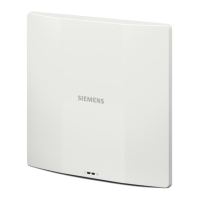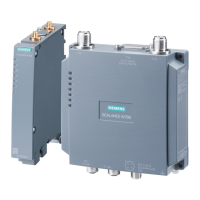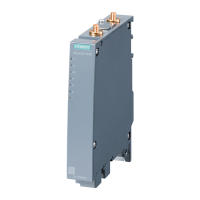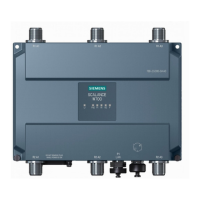Wired Profiles
12.3 Editing a Wired Profile
SCALANCE W1750D UI
156 Configuration Manual, 02/2018, C79000-G8976-C451-02
To edit a wired profile:
1. Click the
link under
on the SCALANCE W main window. The
window
is displayed.
2. In the
window, select the wired profile to modify.
3. Click
. The
window is displayed.
4. Modify the required settings.
5. Click
to save the modifications
To delete a wired profile:
●
Click the
link under
on the SCALANCE W main window. The Wired window
is displayed.
● In the
window, select the wired profile to delete.
● Click
. The wired profile is deleted.
Link Aggregation Control Protocol
The access points support the IEEE 802.11ac standard for high-performance WLAN. To
support maximum traffic, port aggregation is required as it increases throughput and
enhances reliability. To support port aggregation, SCALANCE W supports Link Aggregation
Control Protocol (LACP) based on the IEEE 802.3ad standard. The 802.3ad standard for
Ethernet aggregation uses LACP as a method to manage link configuration and balance
traffic among aggregated ports.
LACP provides a standardized means for exchanging information with partner systems to
form a dynamic link aggregation group. The LACP feature is automatically enabled during
AP boots and it dynamically detects the AP if connected to a partner system with LACP
capability, by checking if there is any LACP Protocol Data Unit (PDU) received on either
Ethernet 0 or Ethernet 1 port.
If a switch in the cluster has the LACP capability, you can combine Ethernet 0 or Ethernet 1
interfaces into the link aggregation group to form a single logical interface (port-channel).
Port-channels can be used to provide additional bandwidth or link redundancy between two
devices. AP supports link aggregation using either standard port-channel (configuration
based) or Link Aggregation Control Protocol (protocol signaling based). You can deploy
access points with LACP configuration to benefit from the higher (greater than 1 Gbps)
aggregate throughput capabilities of the two radios.
supported only on AP-22x Series and AP-27x Series access points.

